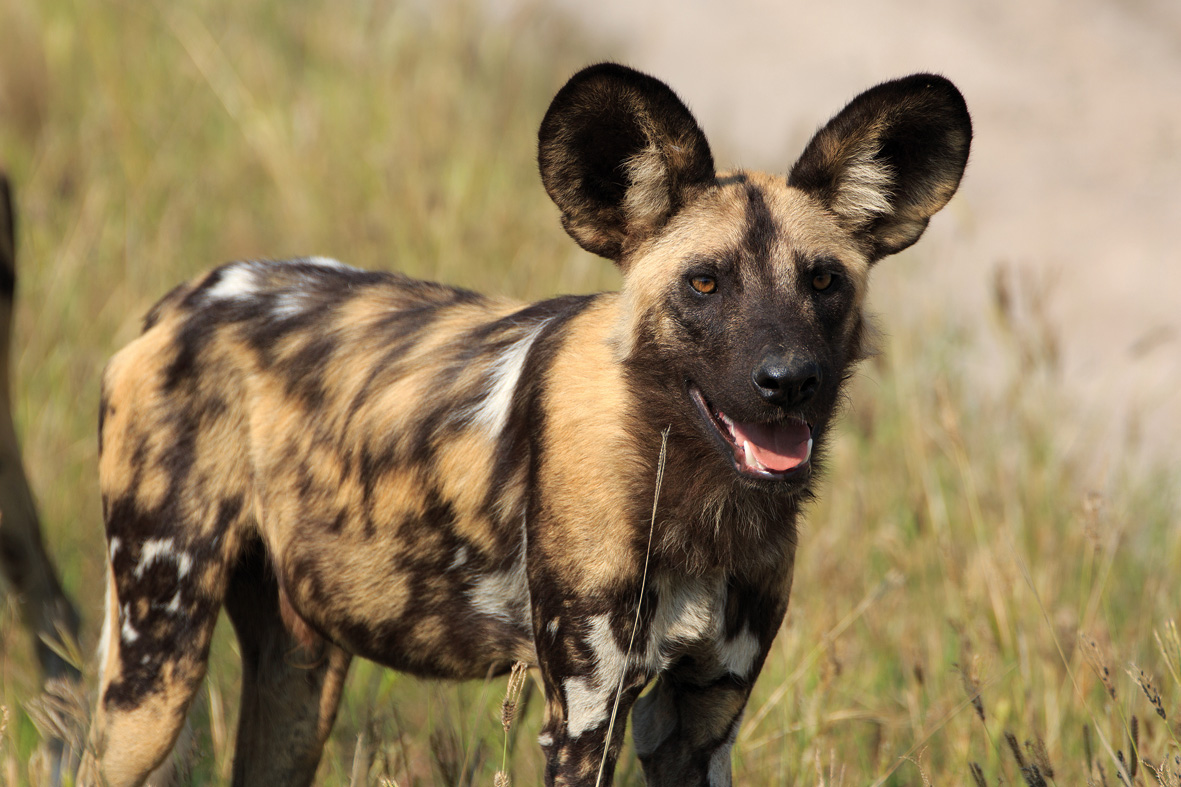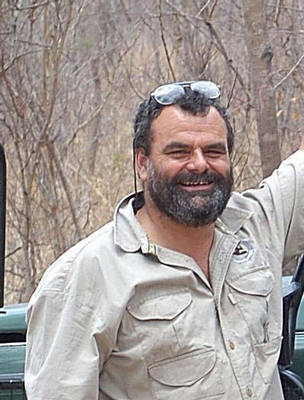
© Foto Fotolia.com, 85197196, Andreas Edelmann
The Endangered World of African Painted Dogs
The population of the free-ranging African painted dogs is extremely jeopardized. Estimates speak of only 3,000 to 5,000 wild animals. With the support of the Academy, Dr. Gregory Rasmussen has been fighting for the protection of the African painted dogs for 25 years.
 The relation between Prof. Dr. Henning Wiesner, Dr. Julia Gräfin Maltzan and Dr. Greg Rasmussen dates back to the year 2004. At the time, they were helping him with the immobilisation and collaring of the African painted dogs. German regional TV channel Bayerisches Fernsehen captured this in an exciting documentary. It has always been a matter of researching and exploring behaviour and migration routes of these animals and protecting them based on the knowledge of the gained data. In March 2016, Dr. Greg Rasmussen gave a gripping talk at the Academy about his findings.
The relation between Prof. Dr. Henning Wiesner, Dr. Julia Gräfin Maltzan and Dr. Greg Rasmussen dates back to the year 2004. At the time, they were helping him with the immobilisation and collaring of the African painted dogs. German regional TV channel Bayerisches Fernsehen captured this in an exciting documentary. It has always been a matter of researching and exploring behaviour and migration routes of these animals and protecting them based on the knowledge of the gained data. In March 2016, Dr. Greg Rasmussen gave a gripping talk at the Academy about his findings.
The Munich-based veterinarian Dr. Ulrike Beckmann, who is concerned with the protection of the African painted dogs as well, visited Dr. Greg Rasmussen in Zimbabwe in 2016. She also states: “No one will be able to prevent the extinction of these fascinating animals, whose unique social life we just begin to understand, if there are not going to be comprehensive regional and trans-regional efforts.” Her personal report says: “In Victoria Falls, the border triangle of Zambia, Botswana and Zimbabwe, a camp for the Painted Dog Research Trust is emerging. Dr. Rasmussen and his team carry on with their research about behaviour and migration routes of the painted dogs from here. At this point, we do not know enough about the patterns and routes the packs follow on their migrations through the vast hunting areas. Individual packs enjoy special protection in their most vulnerable period: whelp breeding.
Another major task is the training of select Zimbabwean students, zoologists or ecologists, who undergo a unique coaching and can acquire scholarships. The aim for the future is to fill significant vacancies in national parks, administration and politics with these experts, where they can further commit to the preservation of the ecosystems.
One decisive factor is participation of the regional population, which truly benefits from the nature conservation project: since as much construction material from the area as possible is used, men from surrounding villages have work for years. In accordance with their traditional activities, women have formed their own task forces, and so a joint water supply system for the village community could be pre-financed. The painted dog-project is therefore a vital part of village life already now. Furthermore, no one would entertain the idea anymore that African painted dogs are responsible for the losses of grazing livestock.
The camp serves as venue for scientists and visitors, and facilitates project work and training courses. In the future, tests (for example laboratory samples) can be carried out on site. Currently they still have to be shipped which is both time-consuming and costly.”
The Academy will be supporting this endeavour in the future as well. ■
